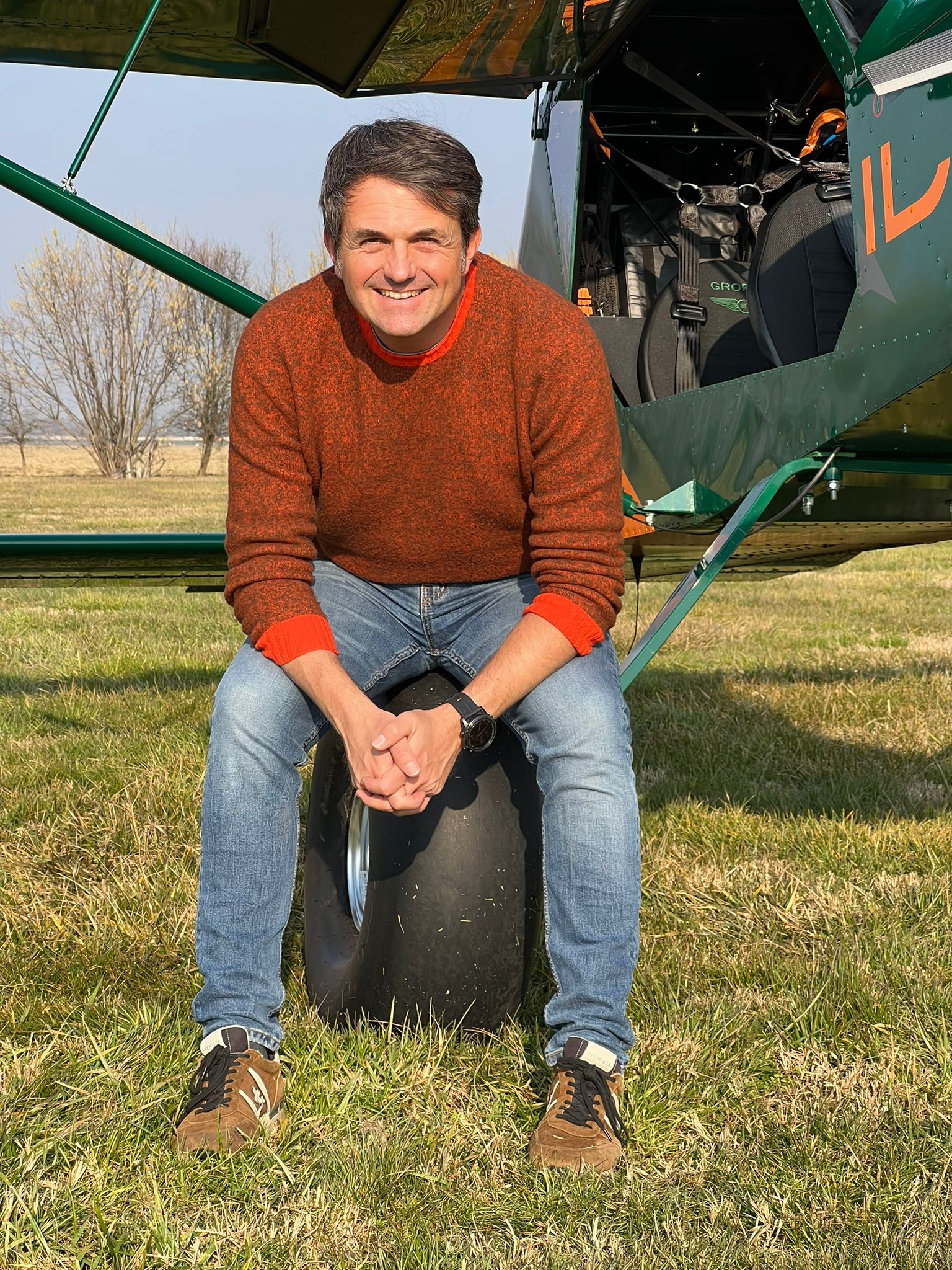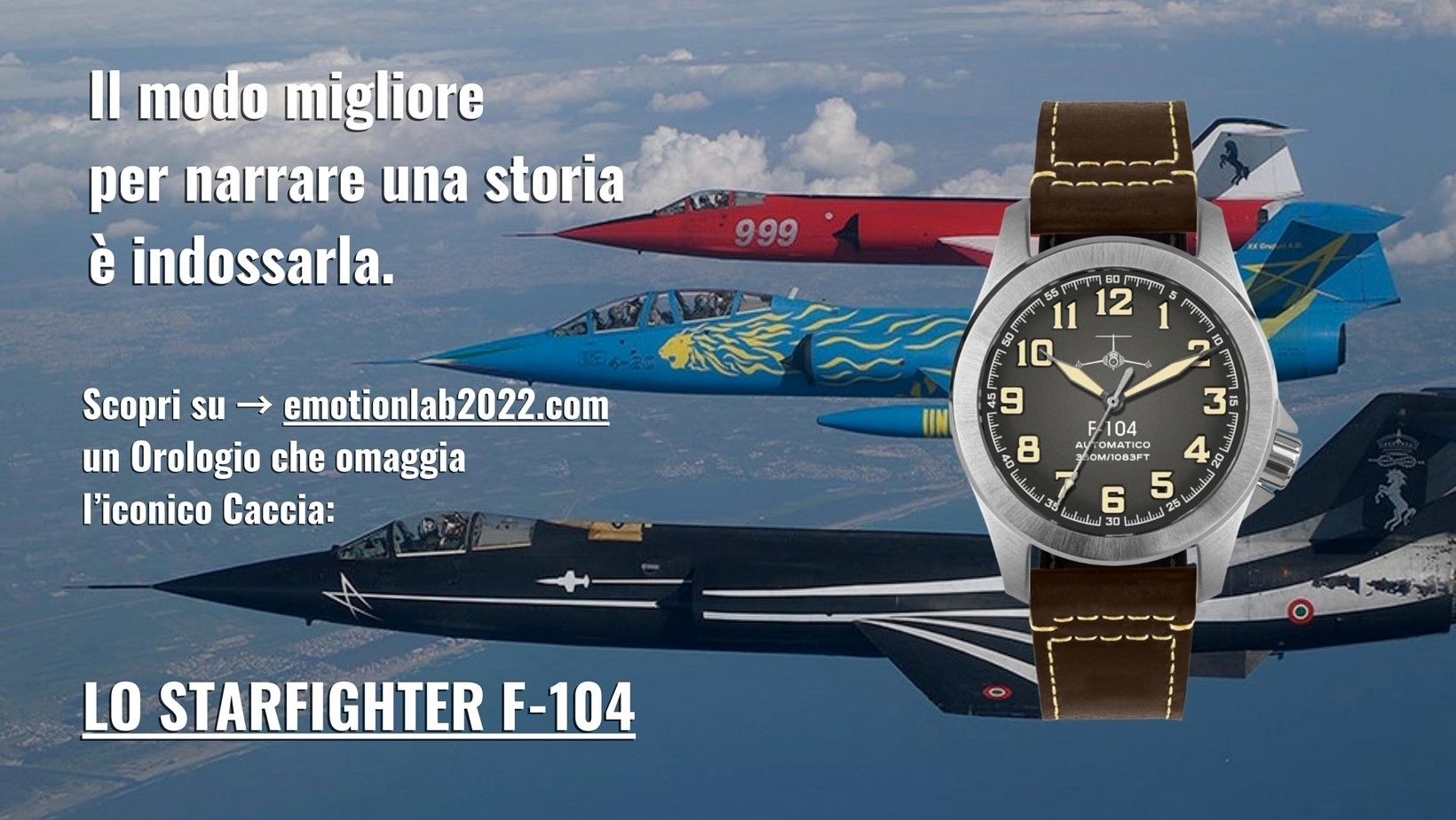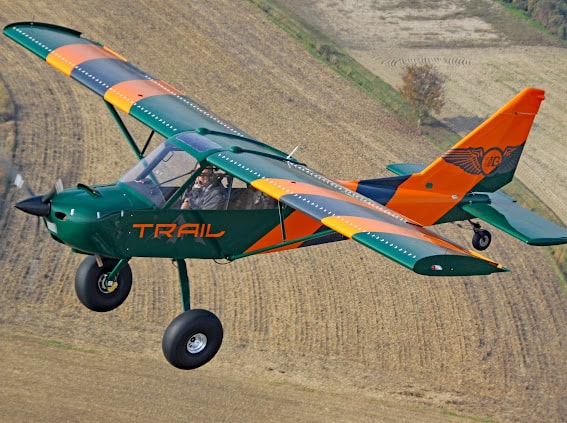
They call it the “fog factory”. It’s an area located north of Po River in Northen Italy, close to Pavia and it’s affected by sudden changes in meteorological conditions. Not today, at least as it looks from outside our car windshield.
We can barely see the road signs taking us slowly to Mezzana Bigli airfield, home of one of the historical and more well-known light airplanes factories in Europe: Groppo Aviazione.
Nando Groppo, the founder of the company, is an incredibly passionate engineer that for decades has been exploring all the ways to make people fly at the lower cost possible, creating popular aircraft like the “Groppino”, literally “the small Groppo” a super-efficient nylon-fabric and aluminum tubes ultralight that, by the way, was the very first light plane that I’ve flown in my life.
Nando is not there, but Federico, Nando’s son and Simone, a very good friend of mine and former Flight Test Engineer for Leonardo, give us a warm welcome to Mezzana. Simone acts as vice chief engineer, multitasking technician and demo pilot, being an expert aviator as well.

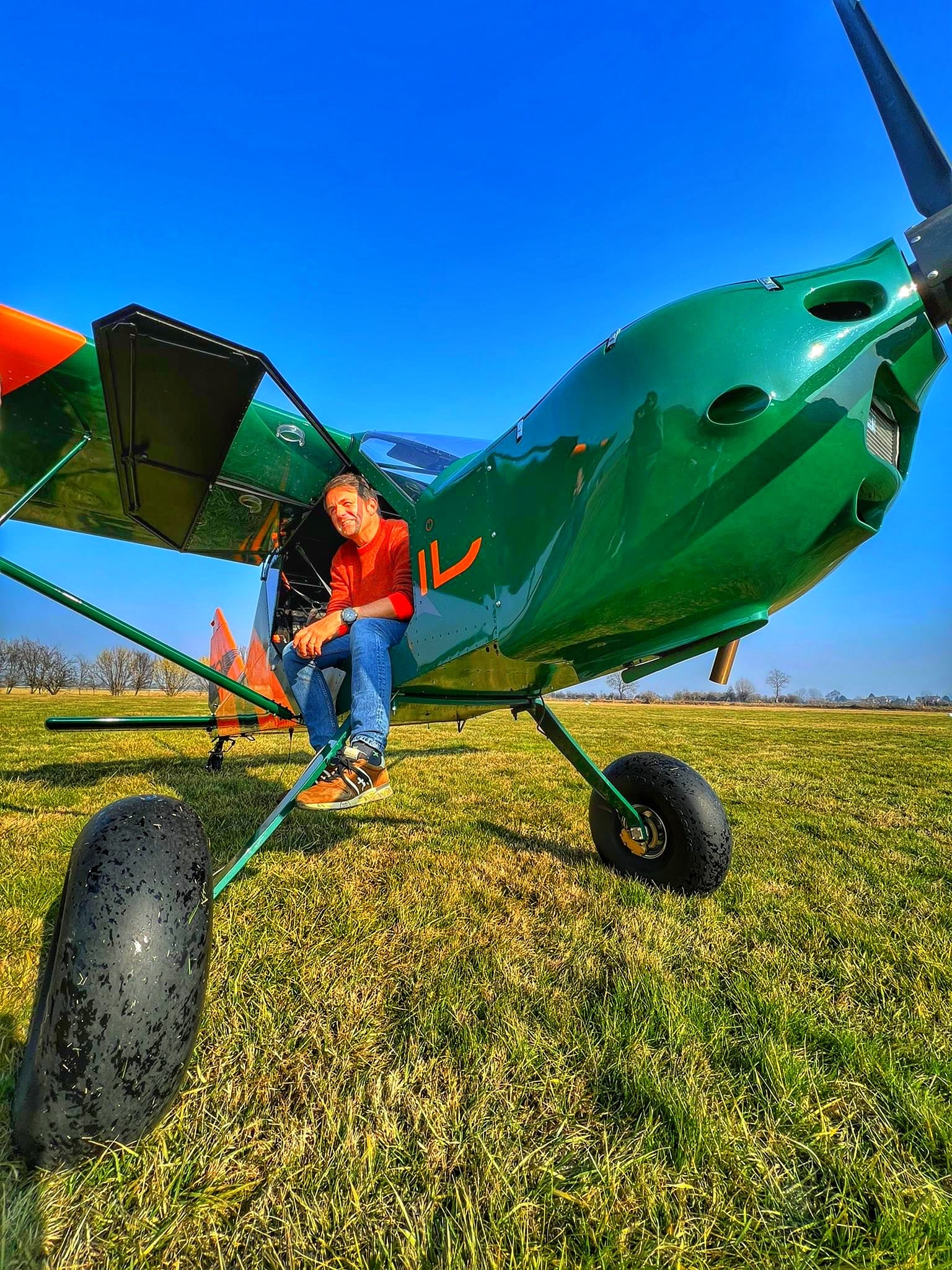
The fog is still there. Not a single knot of wind and the Sun as well doesn’t want to help us out, today. It looks like it’s going to be a no flying day, so it’s a good occasion to talk about the Groppo Trail, the small and pretty tail-dragger that Nando has been selling a lot in the last years.
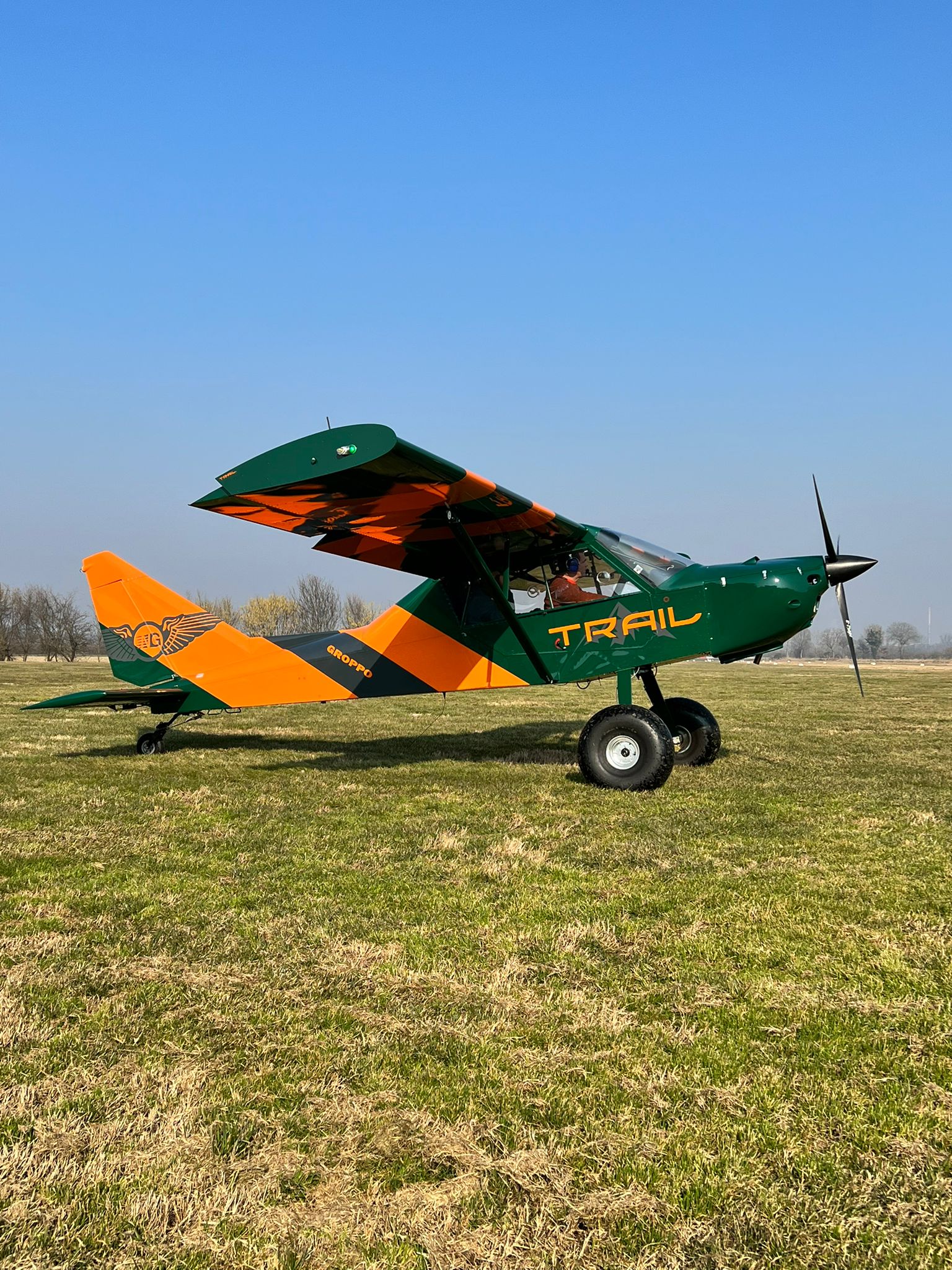
Groppo Aviation is well known for striving to satisfy all the customer requests, as long as they make sense and are safe; the Trail is no exception. It comes with many different optional cabin arrangements, two different main landing gear (one is longer than the standard one), all the types of tail wheel that you can think of. The engine options are part of a very wide catalog as well, being the top current engine available the Rotax 914. This is something not so common within light planes producers that generally prefer to keep it simple by making very few changes to standard designs. Finding an aircraft manufacturer that tests and considers valuable any customer idea as Groppo does, is something unique.
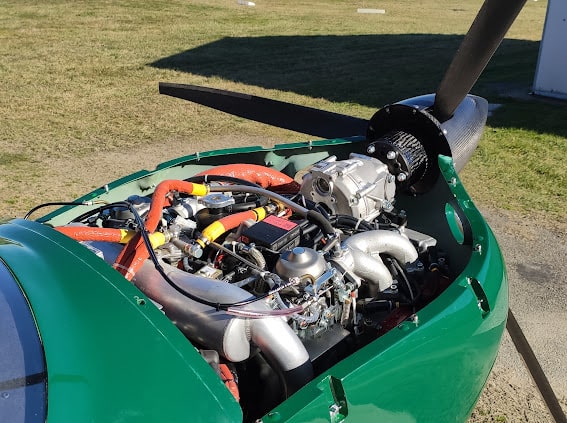
The factory is based on a mixed line of production between the Trail and the G70, the brand new all-purpose cross-country aircraft that inspires great performance and comfort and that I want to come to test in the next months. They are about to double the production line, for the phenomenal number of international and national orders they are getting.
Groppo Aviazione will build, customize and paint at your will the aircraft you will choose and deliver your flight training for the machine. A full dedication to the customer desires.
While we tour inside the factory, we realize that the fog is getting thicker and thicker…. we opt for an early lunch based on a local traditional recipe, fried frogs, and a good plate of handmade pasta!
Well, maybe the effect of the frogs, maybe the exquisite pasta in my stomach or the nice and passionate airplane chat at the table make me look outside the restaurant window and say, optimistically: “there’s sun out there...”
Yes, it’s true, it’s sun! The fog cleared enough to make my test flight possible, so we’d better scramble to the field!
The Trail we are about to fly is a brand-new aircraft, already sold, and ready for delivery. The configuration is about the top you can ask on the type: Rotax 914, with a 3 bladed E-Props propeller, a long version (more bush inspired than the standard one) of the leaf spring landing gear and 27,5 bush wheels that on this plane look perfectly dimensioned.
Completing the configuration, the manual actuated version of the flap extension mechanism and a full optional instrument panel.
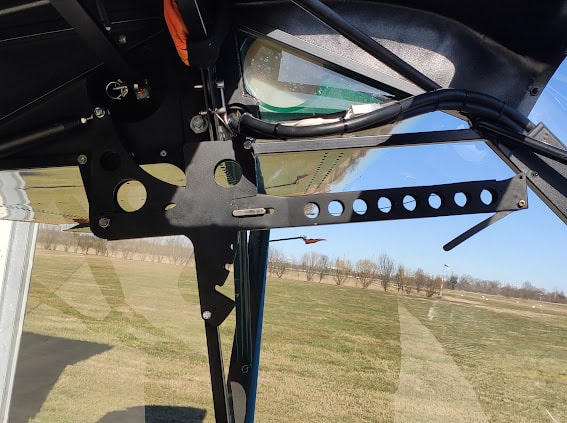
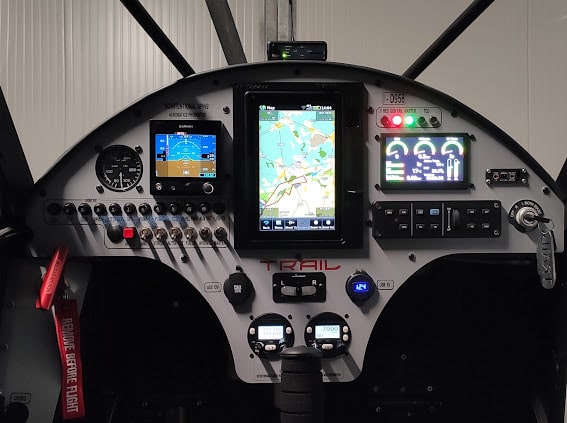
The access to the front cockpit is exactly the same that you can find in any big tire-plane out there: you just step on the right wheel and hop in, while it’s a bit more complicated to seat in the rear cockpit; the cabin is still high enough at that point, and you need to get your left leg in before setting your butt in the very comfortable fabric seat. Once on board, you sit on a pretty wide front cockpit, with adjustable (on ground) seat position and very good room for your legs and arms to move around.
The front visibility is excellent to be on a taildragger, and I have to say that it’s actually good in any direction I look to. The only obstruction is the very robust flap lever positioned on the ceiling of the cockpit and protruding to the left of my head, but with no discomfort at all. The lever has 4 positions from 35 degrees down to 5 up; this last step should help to gain some speed in cruise. The flaps that the lever actuates are simply hinged to the back of the wing and extend for about 3/5 of the span. There are Vortex Generators mounted on the flap leading edge, for a better efficiency even at higher angles of deflection. The main wing as well has VGs for all the span.
How the 914 is electrically installed is a very intelligent solution, on my opinion. As you start up the battery, the main pump starts working, as it is fundamental for the turbocharged Rotax to have at least one electric pump always up and running. The secondary one is available with a switch in the cockpit, but at least you cannot turn the main off by mistake. Good Job.

Closing and opening the big lateral window, integral part of the door, is easy, but you need to select less than full flap or it’s movement will be impaired by the right flap itself.
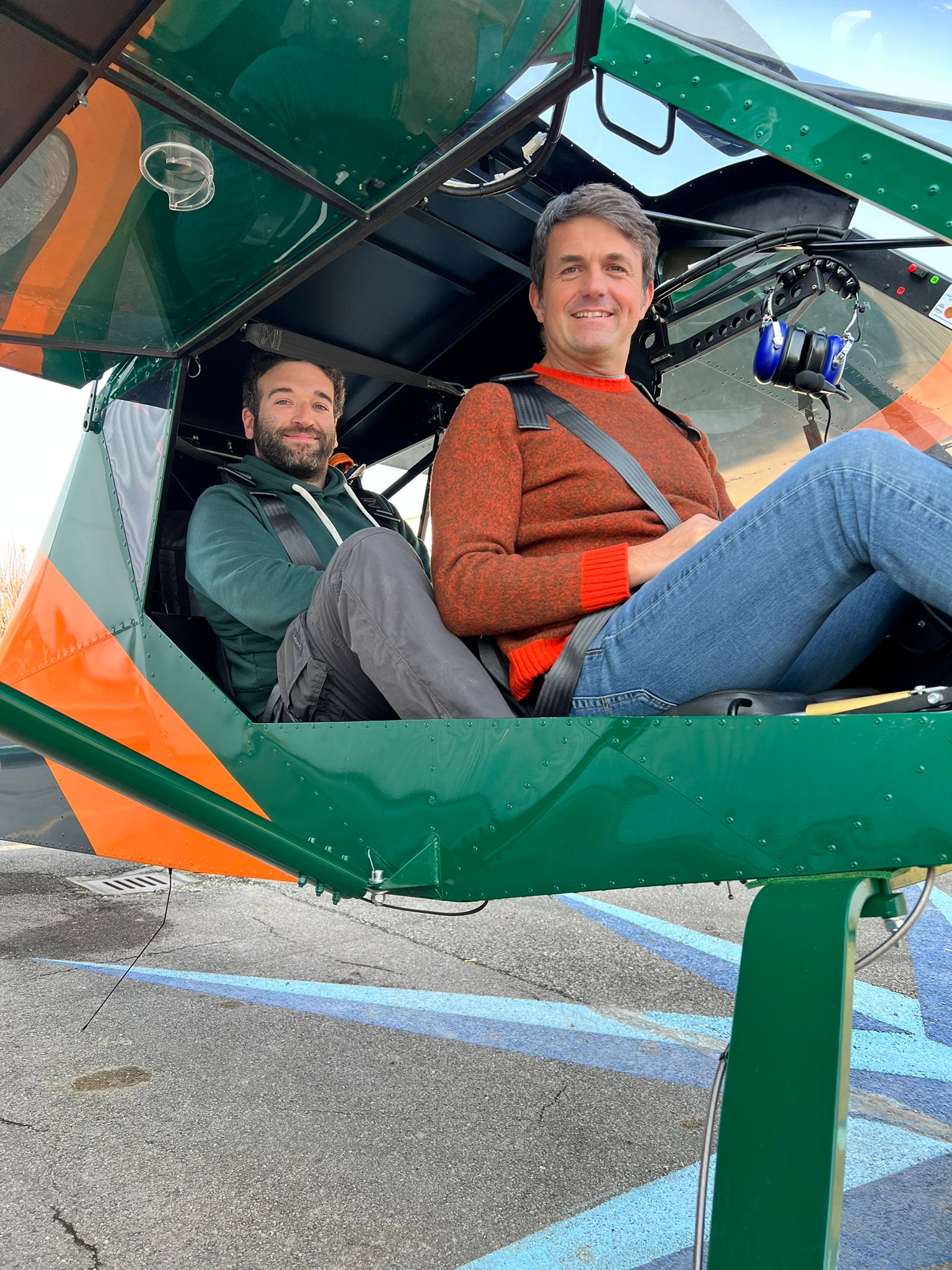
Simone jumps quickly in my backseat and we are ready to start the 914!
Battery up, contacts and the fuel pump is already rumbling in front of us.
“Clear Prop!”, a couple of seconds of starter application and the engine starts playing its best music.
Should I buy a Groppo Trail, I’d go for sure for a much simpler cockpit than this one, but I have to say that the look of all this glass and lights in front of me is fascinating in such a rugged and strong looking plane. The front panel is big enough to put even more stuff on it.
As we wait for the engine temperatures, I tell Simone that I want to taxi a bit before takeoff, not only to evaluate the ground handling characteristics of the Trail but also because is something that I always do and that I would suggest to anyone flying a new taildragger plane; they can be very tricky on the ground even if you are an experienced pilot. A couple of brakes application, 2 or 3 180 turns, and a bit of investigation of engine effect on the tail, is worth the time spent on the ground.
And the Trail handle super well! Pretty tight turns with full pedal, and even better with differential brake application, even if I found a bit difficult to unlock the tail wheel unless you use a good brake hit on the internal wheel. The friction is anyway tunable and is more a matter of taste; for sure a first timer on a tail dragger will benefit from a stiffer friction like this one.
The combination of the long main gear legs with the 27,7’ tires give us just an amazing combination of control and comfort even on the rough terrain beside the runway, facilitated by the exceptionally progressive and predictable action of the double caliper brakes.
Aligned with the grass runway I select one notch of flap, and progressively apply full throttle. The rudder is immediately effective and very well coupled with the springs of the tail wheel that makes directional control smooth and easy. I raise the tail at about 40 km/h (22 knots) and keep on running smoothly on two points to about 70 (38 knots) to get to rotation and immediate liftoff after about 130 mts (420 feet). We have about half fuel in the two main wing tanks and the Trail accelerates well after takeoff, setting a climb ramp, after retracting the flaps, of about 7 degrees nose high and a vertical speed of about 1500 ft/min. The visibility over Mezzana is ok, but it’s not good enough to make me comfortable in making a long-stabilized climb to get an average vertical velocity. So, I stop my climb at 2500 ft and set 4800 rpm on the engine that stabilizes me at about 165 km/h ( 90 knots). I can get about 6-7 km/h more just by moving the flaps full up in the negative range and raising them at the last notch up. At cruise speed and neutral flaps (back to zero degrees), I start with some turns and turn reverse using just ailerons. The adverse yaw is almost absent and just if use the full throw of lateral control you will need to help the turn with a good dose of rudder. The slip ball will anyway center by itself at control release due to an excellent directional stability. The rudder pedals excursion (I noticed that on the ground as well) is not huge, making the rudder, that has anyway a generous excursion, very sensitive and very precise when you have to control sideslip. This characteristic together with the very consistent yaw-induced roll, make turning with pedals incredibly intuitive. You can capture any bank angle just by using the rudder in such an easy and intuitive way that the pedals look like an additional flight control given to the pilot! As Simone says from the back :
”Nando’s planes are thought to turn just by using your feet”.
The amount of bank angle you get just by deflecting the pedals, together with the precision of the rudder control, is enough to give the plane a demonstrated crosswind limit of 28 km/h (15 knots), which, for the class of wing loading we are dealing with, is excellent.
The trim on the longitudinal axis is precise and very well harmonized with the control stick neutral point which is moved inch by inch at any minimum movement of the wheel (mechanical one in this plane, but electric actuation is also available). This pushes me to explore all the static and maneuvering longitudinal stabilities that are excellent with forces that get progressively higher with deflection and with an immediate return to center if the stick is released. The phugoid is damped after barely 3 cycles, making cruise flight exceptionally easy, together with the excellent trimmability.
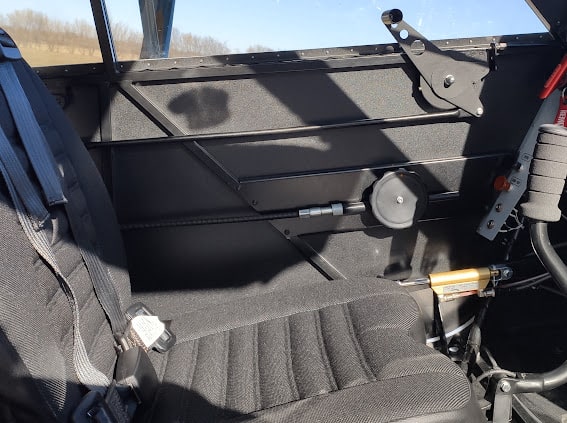
It's time for stalling the Trail. The clean stall is a non-event; the pitch authority is positive and continuous during deceleration and the ailerons remain very effective all the way to stall that is very well defined by a node drop, almost coincident with the position of full back on the stick. No wing drops and longitudinal stability remains excellent. I start pulling the flap lever step by step to get the full flap position and the nose gently start raising for the change if trim that follows. Once full flap is reached neutralizing the forces by trimming forward, makes the stick neutral point move way forward as well. This is ok, but, at least with the present CG, the stick has just a little authority forward remained. So basically, pushing down your nose in landing configuration will result in a reduced nose down pitch rate. Not that this is a normal maneuver during landing, but a bit more nose down authority could be useful.
The aircraft in dirty configuration stalls gently and in a super benign way by dropping the nose and maintaining authority on all axes. The speed I see is 65 km/h, that makes an approach at 85 km/h the best speed for a first timer on the aircraft. I’m planning a stop and go, so I prepare for landing and then stopping. The aircraft at 90-85km/h keep on staying exceptionally stable, precise and easy. The final turn, that maybe I’ve flown with a bit too high power, puts me too high on final and I decide to try sideslipping the aircraft to lose altitude. Being my first landing on the Trail, I don’t want to push it, so I’m ready to go around. But, actually, I don’t need it! With an easy and very comfortable full rudder sideslip I go back on the correct glidepath and de-crabbing the nose to align it with the runway comes as a totally natural tendency of the aircraft.
I’m in short final at 85 km/h and I start reducing power and raise the nose. The forward visibility is good all the way to landing attitude and the aircraft stays on its path, with very minimal corrections needed. The “landing gear+ big tires” combination is ideally tuned to dampen any bouncing at touch down and landing becomes as easy as it could be on a tricycle gear.
I stay easy, initially, on the brakes, but as landing roll progresses, I feel more comfortable on pushing them a bit harder. We come to a stop, without max performing the aircraft in about 250 mt(650 ft).
I want to take off again to be sure that that easiness of flying was not just a coincidence, so I push again the throttle full forward and again, with no effort I’m in the air. The Trail almost does everything by itself! I turn aggressively on downwind at no more than 100 km/h, still climbing and with about 50 degrees of bank, and the Trail just follows my aggressive flying perfectly.
This time I’m on a perfect altitude on base and I make it tighter and more aggressive. Basically, no difference from before, no buffet, no strange behaviors or difficulties I come across. I stop this time in about 170 mt.
The smile on my face must be evident to Federico that is waiting for me on the grass apron.
I stop the engine and open the door still smiling, and I’m almost tempted to ask for another ride…but there will be time for this in the future!
The Trail is just a very well realized, enjoyable, super safe and super easy aircraft for any pilot at any level of experience. The Back country vocation is evident and well exploited by the design and the tuning that the guys at Groppo Aviazione reserved for this aircraft. One of the easiest tail dragger ever flown, that I would call ideal for taildragger school, or for making some experience on backcountry and off runway operations.
Loved every moment of this day here at Mezzana Bigli (fried frogs included), a place where passion and professionalism look very well welded together! Nando made it happen, and he is not planning to stop here….
Jack!

